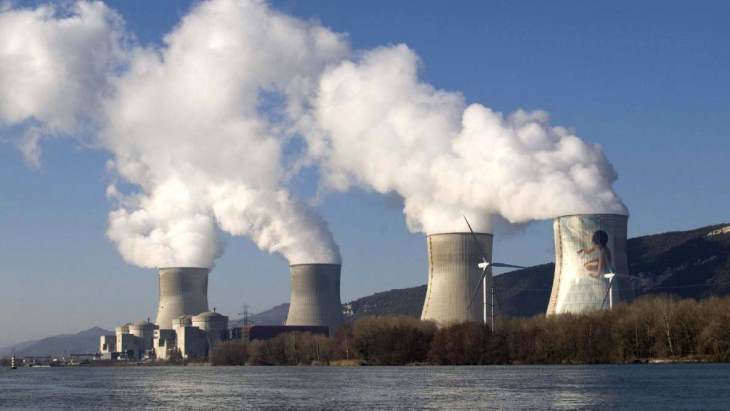
Reprocessed uranium (RepU) is derived from used fuel from nuclear reactors that has been processed at Orano's La Hague reprocessing plant. Once enriched, this uranium can be used again to fuel nuclear power reactors.
In France, only the four reactors at the Cruas-Meysse plant in Auvergne-Rhône-Alpes are certified to use Enriched Reprocessed Uranium (ERU).
Historically, the enrichment process, requiring centrifuges solely dedicated to RepU, was carried out for industrial and economic reasons by Russia's Rosatom at its Seversk site. However, the new geopolitical situation since the onset of the war in Ukraine may lead to a reevaluation of these contracts.
For many years, EDF's Fuel Division has been developing a strategy for the management, recycling and reprocessing of used nuclear fuel assemblies, as well as the diversification of sources of supply, to ensure energy independence and the preservation of natural resources.
On 5 February, Cruas 2 was restarted with its first entirely recycled uranium fuel load.
"A decade-long effort has been made to revive a uranium reprocessing sector, which was suspended in 2013 (and resumed in 2018), and has just reached a historic milestone," Cédric Lewandowski, Senior Executive Vice-President, Nuclear and Thermal at EDF, said on LinkedIn.
He noted: "Reprocessing spent fuel to extract the energy-potential material (which constitutes 96% of the spent fuel's mass composition), namely uranium, for its second use is a circular economy approach that will save 25% of natural resources in the coming decades. Moreover, this sector emits 30% less CO2 than the natural uranium sector and reduces environmental impact."
Fuel containing RepU has the same general characteristics as natural uranium fuels. Worldwide, 75 reactors have used, or currently use, RepU.
Lewandowski said EDF's goal was to be able to reuse RepU in certain 1300 MWe reactors by 2027, aiming for over 30% RepU usage in the French nuclear fleet by the 2030s.
In May 2018, Framatome signed a contract to design, fabricate and supply fuel assemblies using enriched reprocessed uranium to EDF between 2023 and 2032. The fuel assemblies were to be produced at Framatome's facility at Romans-sur-Isère in the Drôme region of France.
EDF studied the possibility of recycling reprocessed uranium in pressurised water reactors in the early 1980s. The utility has demonstrated the use of reprocessed uranium in its 900 MWe power plants. The first enriched reprocessed uranium manufacturing campaign took place at Romans in 1987 on behalf of EDF. Precursor fuel assemblies were loaded into Cruas unit 4 from 1987 to 1990 and a first enriched reprocessed uranium fuel reload was introduced in the same reactor in 1994. EDF used RepU between 1994 and 2013 in the four Cruas reactors, allowing 4000 tonnes of RepU to be recycled.
EDF has made provision to store reprocessed uranium for up to 250 years as a strategic reserve. Currently, reprocessing of 1100 tonnes of EDF used fuel per year produces 11 tonnes of plutonium (immediately recycled as mixed-oxide fuel) and 1045 tonnes of reprocessed uranium converted into stable oxide form for storage.
According to Orano, there are currently nearly 34,000 tonnes of RepU being held in interim storage on the Tricastin site.